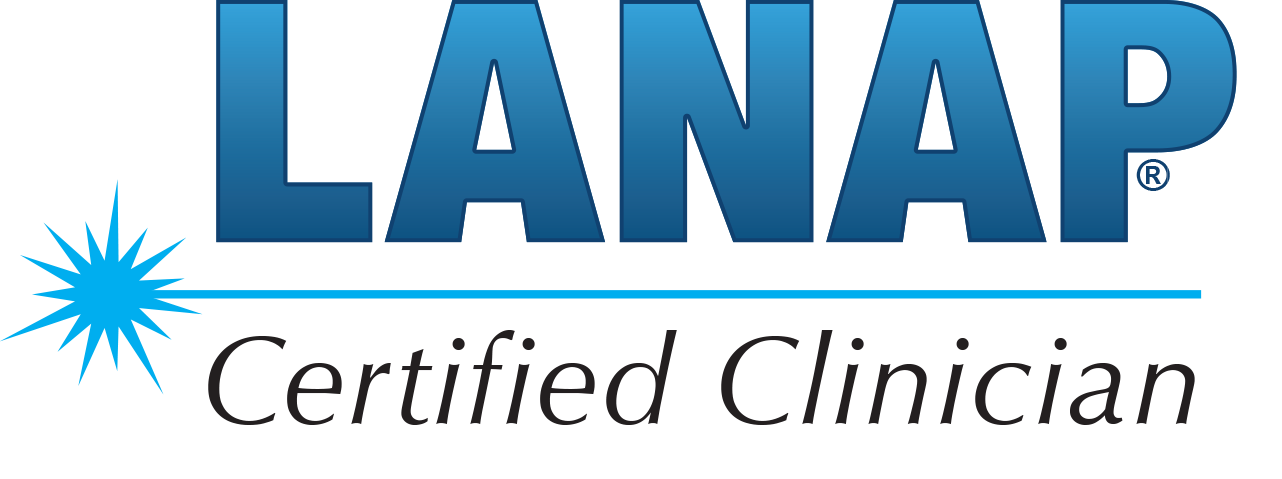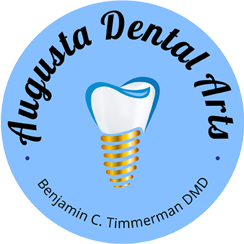Periodontal Maintenance Keeps Your Gums Healthy and Prevents Long-Term Damage
Periodontal maintenance therapy is an ongoing program designed to prevent the progression of periodontal (gum) disease in the gum tissue and bone that supports the teeth. Periodontal maintenance is usually necessary for patients who have been diagnosed with and treated for periodontal disease.
Maintenance visits to the dentist can help to prevent additional dental problems in the future, such as further bone and tooth loss. Treating the disease in its early stages can help to save you from not only oral and overall health problems, but also money!
Why is periodontal maintenance necessary?
Gum disease is caused by the bacteria found in plaque. The toxins produced by these bacteria cause our bodies to destroy the bone that supports the teeth. If plaque is not removed, it can harden and form calculus (tartar) that can exacerbate the periodontal problem.
Even someone dedicated to good oral hygiene will be unable to completely prevent the formation of all calculus on the teeth. Calculus forms when the minerals in the saliva harden, or calcify, the plaque on the teeth. Plaque is soft and sticky and is continually forming. It is therefore important to ensure proper, thorough brushing and flossing on a daily basis to remove the plaque before it has the chance to solidify into calculus.
Flossing and brushing will help to keep the calculus formation to a minimum, but regular maintenance is needed to professionally remove what has accumulated. During your maintenance cleaning, the hygienist will evaluate and record your periodontal pocket depths and check for hidden periodontal problems.
How often do I need a maintenance visit?
Your Dentist will recommend how often you should have a periodontal maintenance visit. The frequency will be determined by the type of periodontal disease you have, the type of periodontal treatment you have had in the past, how you have responded to those treatments, and how quickly you accumulate plaque. The most important factor, however, is how dedicated you are to good hygiene at home.
LANAP is Minimally Invasive, With No Cutting or Sutures!

Traditional surgery typically utilizes a scalpel so that the doctor can reflect the gum tissue back for visibility and to clean the pocket and reduce the pocket depth. The pocket depth is reduced by cutting away tissue. In many cases the additional use of bone grafting or membrane materials will be needed in order to achieve reattachment of the gum tissue to the root surface of the tooth. Although in some cases the only way to treat the patient is by traditional surgery the vast majority of patients that we see opt for the less invasive and more comfortable LANAP®, or Laser Gum Surgery.
LANAP® does not require the use of a blade, or sutures. It is a minimally invasive surgery that results in very little recession and pain for the patient. The laser operates at a wavelength that can tell the difference between the diseased tissue and the healthy tissue. This means that the laser is extremely safe and selective when being used in surgery. For the first time we can remove the diseased tissue and bacteria from your gums without harming, cutting, or removing healthy tissue!
Some Key Differences Between Traditional Gum Surgery and LANAP®
- Pain – Traditional surgery can be fairly painful and require pain medication and downtime. Many patients opt for dental implants to avoid the pain involved in gum surgery. LANAP® involves much less discomfort. There is almost never a need to prescribe pain medication and the patients can usually go right back to work and move on with their daily routine.
- Recession – Because traditional surgery requires the use of a blade there is no getting away from the gum line being reduced. The question is how much. Traditional surgery can result in lowering the gum line anywhere from 2-4 mm all the way to 10-15mm. LANAP® is much less invasive and more selective in the tissue that it cuts… This results in little to no recession of the gum line. This is a very important difference because recession can lead to a number of aesthetic problems for the patient and cause the teeth to become very sensitive to cold and hot temperatures.
- Healing Time – The healing time for LANAP® is much faster because it is a new technology that is less invasive than scalpel surgery. The laser kills the bacteria in your pockets resulting in reduction of inflammation and healthier tissue.
- Long-term results – Although we can have fantastic results long term with both treatments, LANAP® is far more predictable when it comes to bone regeneration and connective reattachment of the tissue. The laser stimulates the bone that surrounds the root of the tooth and has been proven to encourage regeneration, often saving teeth that would have previously been extracted. Many times, we can reverse the effects of periodontal disease and the patient will get better and better as time goes on.
In conclusion, as technology evolves and breakthroughs are made in dentistry, we are committed to keeping up and offering the latest and most advanced treatments to our patients in order to provide the highest standard of care available. Utilizing a laser to treat gum disease is something that many patients can take advantage of, although not every patient is a candidate for laser treatment.
The Laser Assisted New Attachment Procedure (LANAP®) is a faster, more comfortable periodontal disease treatment in Augusta, GA at Augusta Dental Arts that safely treats progressive bacterial infections and restores health to the teeth and gums.
Laser Surgery for Gum Disease:
• No need to cut or suture the gum line to reach and destroy bacteria
• Minimizes up to 90 percent of inflammation, reducing pain significantly
• Fast recovery, less reliance on pain medication
• Little to no gum recession resulting from treatment
• Grows new bone to support existing teeth
LANAP® for the Treatment of Gum Disease
1. To begin laser gum disease treatment, Dr. Timmerman will first measure your gum pocket depths and identify the amount of attachment loss using a dental measuring instrument.
2. The FDA cleared PerioLase® MVP-7™ is now used to enter the gum pockets and kill bacteria without causing any disturbance to the healthy portions of your gums. Inflammation and bleeding are minimal, and patients rarely feel any discomfort or have any resulting gum recession.
3. Ultrasonic scalers are also used during the procedure to eliminate the layers of tartar that have built up on the teeth and under the gum line. In some cases, the laser can be helpful beforehand to denature the tartar and make elimination easier.
4. Dr. Timmerman will protect your gums from reinfection by creating small clots around the teeth using the laser. This seals the treated areas so that your gums can heal.
5. Compressing the remaining gum tissue against the root surfaces of your teeth will encourage natural reattachment without relying on stitches.
6. The last critical step is to adjust the bite and make sure no trauma was sustained during your gum disease procedure, which is important among patients with significant bone loss.
Dr. Timmerman generally performs LANAP® in one to two office visits using the PerioLase® MVP-7™, an FDA-cleared dental laser that is designed to quickly target and discriminate bacteria and diseased oral tissue from your healthy tissue to reduce inflammation and bleeding significantly, a major reason why more patients choose laser over the scalpel method. Using a blade to locate bacteria causes damage and inflammation on the gum line, making it a periodontal disease treatment that may still be effective but harder to tolerate and longer to recover from.
LANAP® is a faster, more precise, and comfortable periodontal disease treatment favored also because it produces steady and reliable outcomes, including bone regeneration around your existing teeth. Medical studies and our own patients have shown that laser therapy provides added bone support to reduce risk of tooth loss. The chance of gum recession, which is a common side effect of scalpel surgery, is also significantly reduced with LANAP® and the reattachment of your soft tissue to the tooth surface is accomplished naturally, without sutures, making recovery a breeze.
Periodontal Plastic Surgery Enhances the Appearance and Health of Your Smile!
Periodontal Plastic Surgery refers to cosmetic procedures performed on the gums to enhance the appearance and health of the smile. Also referred to as gum reduction surgery, crown lengthening may be a recommendation when too much gum tissue is present. This periodontal plastic surgery procedure can be rendered in two forms and is most often performed by a dental professional.
Esthetic Crown Lengthening
Those who feel that they have a “gummy” smile can greatly benefit from esthetic crown lengthening. This relatively simple procedure usually takes about an hour to perform and is essentially a “gum lift.” During the procedure, the doctor removes excess gum and bone tissue and reshapes the smile to expose more of the natural tooth. While this gum reduction surgery can be performed on just one tooth, it is often done on the entire smile. The end result is that more of the natural tooth surface is exposed creating a wider, more beautiful smile.
Esthetic crown lengthening can also be done to preserve the health of the smile. Removing excess gum tissue with gum reduction surgery can help control and prevent periodontal disease. Increasing the exposed surface area of the tooth will decrease the depth of periodontal pockets between the teeth and gums where bacteria can grow and harm your oral health.
Prior to the procedure, a local anesthetic will be administered by your doctor to prevent pain and discomfort. Small incisions in the gum tissue will be needed to separate the gums from the teeth. In some cases, a small amount of bone will also need to be removed to create a natural smile. Once the procedure is completed, the doctor will clean the incisions with sterile water and place sutures and a protective bandage over the area. This will encourage the teeth and newly contoured gums to reattach to each other. A follow up appointment will be needed one to two weeks after the procedure to evaluate healing.
Functional Crown Lengthening
Sometimes functional crown lengthening will be needed in order to perform a cosmetic or restorative procedure. This may be the case if a tooth is too far decayed, broken below the gum line, or has insufficient structure for a restoration like a crown or bridge. In gum reduction surgery cases like this, your doctor may be required to lower the gum and bone levels to expose more of the root surface so that it can be restored. However, simply trimming back the gum line is usually not sufficient. Instead, we will need to reshape the gums and supporting bone to allow for adequate room to place a high-quality restoration.
The procedure is similar to esthetic crown lengthening in that a local anesthetic will be administered. Small incisions are required to remove the gum tissue and reshape the area. When the gum reduction surgery has been completed, your doctor will place sutures that will need to be removed in one to two weeks. After the area has completely healed, usually in about six to eight weeks, the final restoration can be placed.
If you have excess gum tissue that is affecting your smile or ability to have a tooth restored, you may be in need of gum reduction surgery. Call your doctor today for a consultation to determine if this procedure is right for you.
Laser gum surgery in Augusta, GA at Augusta Dental Arts is periodontal disease treatment you can live with! Call our friendly team today for your appointment.

